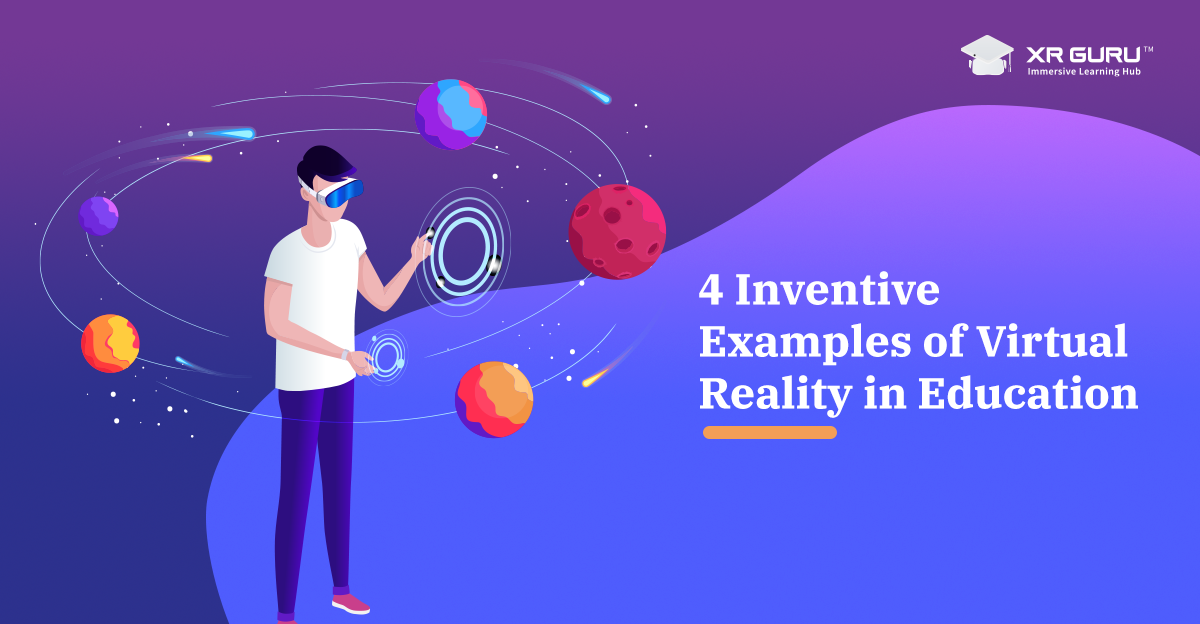 Let us assume your students are learning about the planets in our solar system. How would you like for your students to have a chance to take a closer look at the planets by 'visiting' them? Sounds crazy, impossible? Thanks to virtual reality (VR) technology, this is now possible. Adopting virtual reality in education makes learning fun, interactive, and engaging. VR in the education market is booming, and a Fortune BI report predicts the global VR market in education to reach $13,098 million by 2026. In this blog post, we will explore some inventive ways to use virtual reality in education.
Let us assume your students are learning about the planets in our solar system. How would you like for your students to have a chance to take a closer look at the planets by 'visiting' them? Sounds crazy, impossible? Thanks to virtual reality (VR) technology, this is now possible. Adopting virtual reality in education makes learning fun, interactive, and engaging. VR in the education market is booming, and a Fortune BI report predicts the global VR market in education to reach $13,098 million by 2026. In this blog post, we will explore some inventive ways to use virtual reality in education.4 Inventive Examples of VR in Education
1. Virtual Field Trips
Field trips can be an essential part of the educational process for they provide exposure and realistic experience to the learners. Field trips involve a lot of planning, organizing and can be expensive. Post COVID-19 pandemic, travel restrictions have made it difficult to travel across the globe.
So, what if you could 'teleport' to any location without physically traveling there?
By incorporating virtual reality in education, you can explore otherworldly locations without traveling to them. With VR, you can interact with realistic 3D simulations and explore places that are not readily accessible without ever leaving the classroom. For example, it is nearly, if not, impossible for schools to take their students on a field trip to the moon. However, with VR technology, you can 'travel' to the moon and get your students excited about space exploration. They can see true-to-life graphics, explore the atmosphere from several angles, and get a life-like experience.
2. Virtual Reality Labs
Many educational institutions do not have the budget or space to build best-in-class science labs. Also, amidst the pandemic, many institutions are migrating to online education, and one of the major drawbacks of online education is the lack of practical elements. With VR, you can simulate lab experiments and offer a safe environment for your students to practice and sharpen their skills. VR labs eliminate the risk involved in traditional training exercises; the learners can hone their skills without worrying about real-life consequences. For instance, medical students can practice surgery and other high-risk operations without causing harm to a real patient.
Furthermore, teachers can benefit from the use of virtual reality in education. With VR offering a safe environment to carry out experiments, teachers are freed up to focus more on presenting the subject matter in the best possible way.
3. Virtual Reality for Special Needs Children
The use of textbooks or other traditional learning tools can be unfruitful for children with learning difficulties. Adopting virtual reality in education can act as an assistive technology for students with special needs. VR has the potential to help these students learn through immersive experiences. With VR, these children can explore different environments and interact with subject matter with much less difficulty.
Furthermore, people with certain disabilities who cannot physically attend classes can do so through virtual reality.
4. Virtual Reality for Soft Skills and Language Learning
VR can be an efficient tool to learn soft skills. VR can enhance collaboration, negotiation, and other forms of interaction. For example, VR presents a platform for socially anxious individuals to improve their verbal communication skills. Given how public speaking and presentations are nervous situations for some people, students can perfect the art of public speaking through VR-based simulations. You can participate in virtual events, speak before a virtual audience, listen to their feedback, and improve your skills.
When it comes to learning a new language, it is important to constantly practice and interact with native speakers to improve your language skills. Solely relying on classes, recordings, or books to learn a new language makes the learning process less engaging and interactive. However, VR in education can elevate the language learning experience to new heights. VR-based roleplaying can help you get a life-like experience. With VR, you can connect with native speakers around the globe and experience the language in its natural environment. For example, if you are learning Spanish, you can virtually visit Madrid and attempt to book a ticket at the metro railway station.
Concluding Thoughts
Virtual reality in education has limitless potential, and it can transform the methods of teaching and learning as we know it. VR makes learning fun and inspires the next generation to find cutting-edge solutions to build a better, secure future. So, transform the learning experience by joining the VR educational revolution now.
Do you want to embrace virtual reality in education? XR Guru is a next-generation application that brings learning to life through immersive experiences. With curated content, an extensive content library, and tools to teach complex topics, XR Guru is a one-stop solution for all your virtual reality learning needs.
Contact us for a free consultation on incorporating virtual reality in education
Claim Your Free Consultation